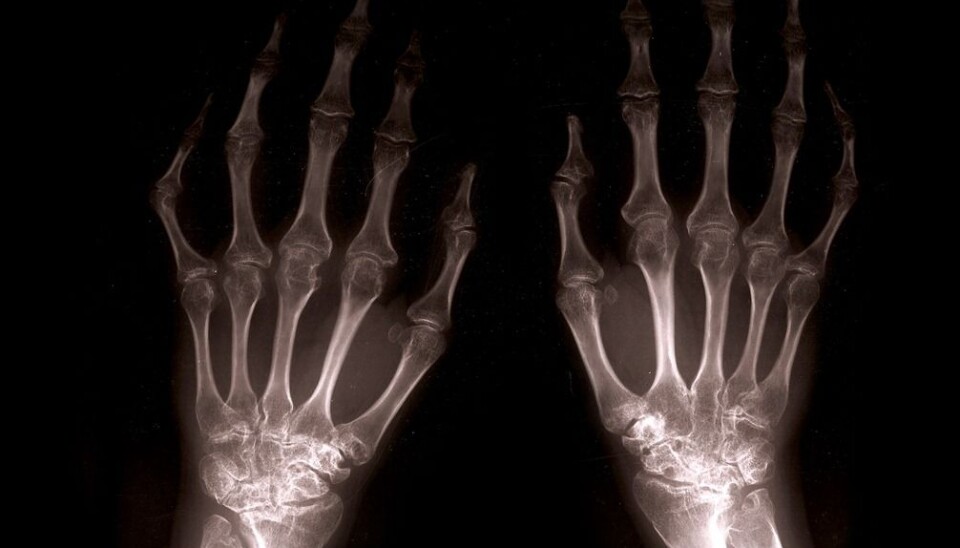An article from University of Oslo

New-onset MS patients have low bone density
Patients recently diagnosed with multiple sclerosis have low bone density and thus an increased risk of developing osteoporosis.
Denne artikkelen er over ti år gammel og kan inneholde utdatert informasjon.
Low bone density often occurs at an early stage of multiple sclerosis (MS). This is unfortunate because low bone density can result in osteoporosis.
Researcher and physician Stine Marit Moen has measured bone density in young patients recently diagnosed with MS and compared the results with healthy peers.
The findings shake up previous assumptions.
Surprisingly, MS patients had low bone density even at the start of the disease.

This means that, possibly, MS and low bone density could share some of the same underlying causes. This has not been known previously.
A common denominator
Researchers have known that MS patients, just like many other people with a chronic disease, can have low bone density because of little physical activity, poor nutrition, changed eating habits or medications that deplete the skeleton. But now bone health has been measured right at the start of the disease.
“We are talking about young, active people living normal lives in normal jobs without any particular loss of function. It was therefore not obvious that their bone density would be low” comments Moen.
The study is based on the theory that there is a relationship between low levels of Vitamin D and the risk for developing MS.
“Because this is a risk factor, we looked for other consequences of low Vitamin D levels at the start of the disease. Such as effects on the skeleton, because Vitamin D is important in building bone tissue”, explains Moen.
Low Vitamin D can result in low uptake of calcium. This means problems for the body’s bone builders because without calcium, it is difficult for them to build the bone structures.
Low bone density can cause weak bones
Moen has checked patients in Oslo who were diagnosed with MS in the period from 2005 to 2008. Patients who had the very first possible indications of the disease were also included in the study.
107 people were diagnosed and 99 were included in the study. The control group was randomly selected from the National Register, and the patients themselves recruited an additional control group that included people who were related to them.
Bone density has never been measured systematically in young, newly-diagnosed MS patients; previously, studies have included older people with advanced disease.
This new knowledge makes it easier to prevent osteoporosis in a more focused way.
“We should be aware of this right from the start of the disease”, emphasises Moen.
“We must be more proactive and focus on prevention in those people who have several risk factors. A healthy diet, cutting out cigarettes, increased load-bearing physical activity – all off these things help to reduce the risk for developing osteoporosis."
No basking in the glory of Vitamin D
There are several common denominators for MS and osteoporosis. One of them is low Vitamin D – a vitamin that the body makes itself in sunshine. Perhaps it isn’t so strange then that the incidence of MS increases the further away from the equator you are.
If the level of Vitamin D decreases, the risk of MS increases. As the same vitamin affects bone density, a deficiency could contribute to development of both MS and osteoporosis.
“We do not know the cause of the findings for certain”, states Moen.
“It could be Vitamin D deficiency, it could be progression of MS itself with inflammation, or it could be a genetic predisposition. Probably, it is an interaction between a number of factors".
MS can develop in several different ways. Now Moen wishes to find out whether the various sub-groups of the disease reveal differing bone densities.
“Sub-groups of MS are associated with differing levels of function in the patients. One path forward is to study the various ways in which the disease progresses and to see how this manifests in bone health too”, concludes Moen.
--------------------------
Read the Norwegian version of this article at forskning.no
































